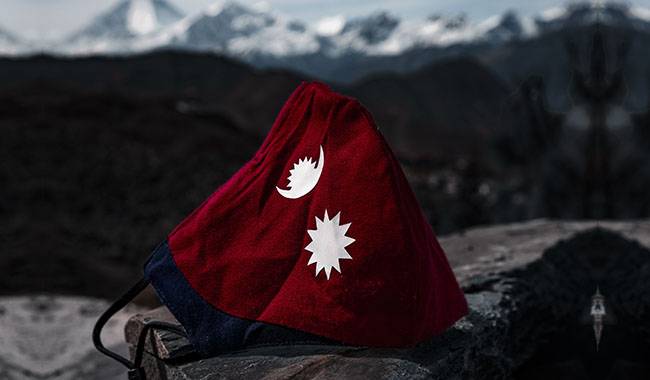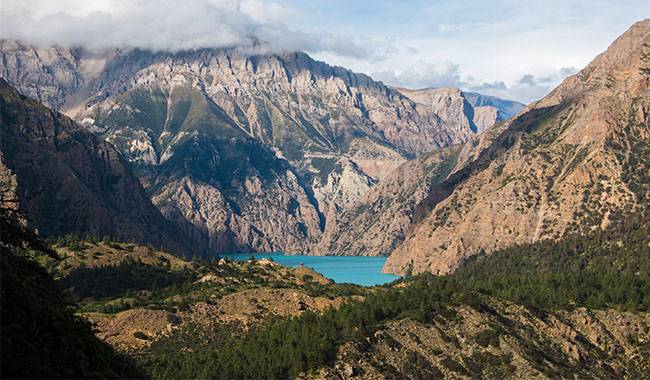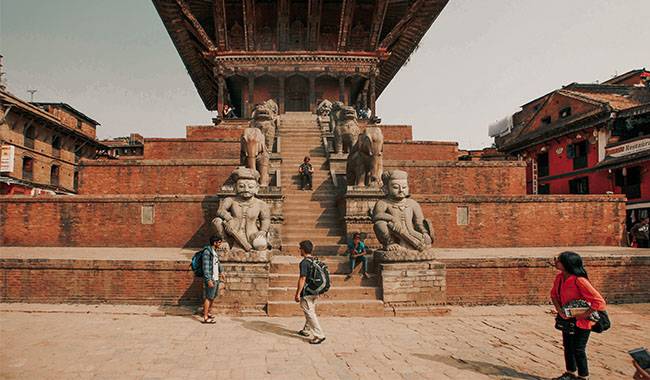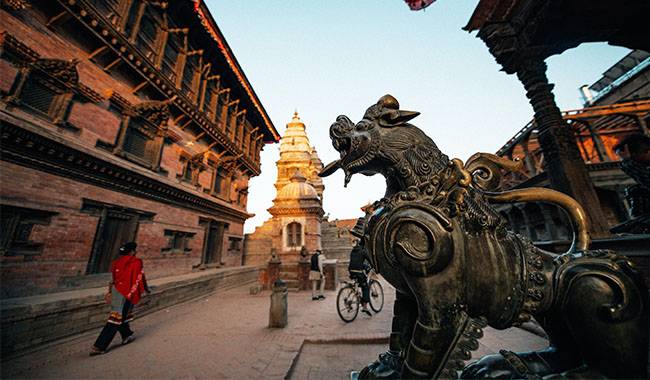
Dreaming of a trip to the highest mountain on earth? Fantastic! I believe that everyone should visit the Himalayas at least once in their lives. This LCN Outdoors article will answer the most frequently asked questions by everyone planning a Nepal Hiking.
About Trip Preparation – Nepal Hiking
A. When is the best time to go to Nepal?
The country has two tourist seasons: March to early May, and October to November. In spring, there are fewer tourists and everything is slightly cheaper; in autumn, the colors are more vibrant and the air is fresher. If you pass through the lakes, it’s best to go in the fall, as they can be covered with snow in the spring. Otherwise, there is no fundamental difference.
B. Do you need special training?
It all depends on the route, but the main Hiking does not require any special skills or training. Any healthy person in good physical condition can do Hiking. however, if the route has an altitude of more than 2 miles (3200m), you should start training your endurance at least a few months before the trip: running, swimming, skiing, or cycling.
C. Do I need to get any vaccinations before going to Nepal?
No.
D. How long will the trip take?
No
Start with two weeks. The longer the better. You won’t get bored.
E. Is Nepal safe?
It is one of the safest countries in the world for tourists. Crime is almost non-existent here.
F. How can I go to Nepal? Where do I fly to and how much does it cost?
Fly to Kathmandu, the capital of Nepal. Tickets cost between $600 and $1000, depending on the airline and the dates of travel. It is always cheaper to buy tickets in advance.

G. Do I need a visa to go to Nepal?
Tribhuvan International Airport is the only international airport in Nepal. The immigration office of TIA (Tribhuvan International Airport) under the Department of Immigration has been providing visa on arrival service for visitors flying to Nepal. The procedure of “Visa on Arrival” is very quick and easy. During the peak tourist season, you can expect some queues. If you want to skip these queues, you can also consider obtaining a visa from a Nepalese diplomatic mission abroad prior to your arrival. The choice is yours.
If you have already obtained a visa from a Nepalese diplomatic mission, you must enter Nepal within 6 months of your visa issuance date. Your total period of stay is calculated from the day you enter Nepal.
Visas obtained at the point of entry and exit are “tourist visas”. They have the function of multiple entries. The tourist visa on arrival is the only visa to enter Nepal. If you are visiting Nepal for a purpose other than tourism (sightseeing, touring, traveling, hiking, trekking, visiting friends and family), you should still obtain a “tourist visa” to enter the country. However, you must change the visa category by presenting the required documents to the immigration office, depending on your purpose and the duration of your stay in Nepal.
Nationals of the following countries are required to obtain a visa from a Nepalese government diplomatic mission (embassy/consulate) near them prior to arrival
Nigeria
Ghana
Zimbabwe
Swaziland
Cameroon
Somalia
Liberia
Ethiopia
Iraq
Palestine
Afghanistan
Syria
Refugees with travel documents
If you do not obtain a visa before boarding your flight, follow these simple airport arrival tourist visa (TIA) procedures.
Step 1
Fill out the “Arrival Card”
Fill out the online “Tourist Visa” form (you can do this prior to arrival by visiting our official website Immigration Department or by using a self-service terminal upon arrival at the airport). If you fill in the form from the website, you will get a submission receipt with a barcode, please print it out and carry it with you to obtain your visa. It works for fifteen days and then expires. If so, you will have to fill it out again.
Step 2
Pay at the bank according to your visa requirements (15/30/90 days)
Obtain a receipt
Although you can use different payment methods (at the visa fee counter), we recommend that you bring some cash with you for security purposes.
Visa on arrival fee at the point of entry
15 days – USD 30
30 days – USD 50
90 days – USD 125
Step 3
Bring your online form, payment receipt, and passport to the immigration desk
Present your documents to the immigration officer for visa processing. He/she will issue you a visa once he/she is satisfied.
Visa Extension Fee
Tourist visa extensions are available for a minimum of 15 days at $45 and $3 per day for additional days.
For delays of less than 150 days, an additional $5 per day is charged as an overstay penalty.
Free visas (free visas), and free visas are available to visa applicants in the following categories.
- Children under 10 years of age except for US citizens
- SAARC citizens (except Afghanistan) for a maximum period of 30 days for their first visit to Nepal in a given visa year. Afghan citizens are eligible for a free visa on arrival only on the recommendation of the Department of Immigration. If you are an Afghan citizen, you can request the relevant agency to invite you to Nepal to do the necessary paperwork with the Ministry of Immigration to obtain a free visa “on arrival”.
- Non Residential Nepalese (NRN) cardholders (issued by the Ministry of Foreign Affairs/Nepalese Diplomatic Missions abroad)
- Chinese citizens
Summary: Visas are issued upon arrival in the country and cost US$30, US$50 and US$125 for 15, 30, and 90 days respectively. Bring a pen to fill out the form and a few 2×4 photos.
Official visa information
https://www.immigration.gov.np/page/tourist-visa
https://us.nepalembassy.gov.np/tourist-visa/
H. What should I do when I arrive in Kathmandu?
You have to take a cab (the cost is about 5-10 USD) to the tourist area of Thamel. There you can find hotels, restaurants and countless tour companies. There are other places to stay in the city, but for first-time stayers, it is better to stay in Thamel.
About the Route and Life – Nepal Hiking

A. Which track to choose?
For the first time, the classic route around Annapurna, the trail to Everest Base Camp, and the Langdang area are good. For the second time, or for more experienced Hikers, Hiking around Manaslu, Tsum Nepal valley is fine. And for the third time, you already know everything yourself and don’t need any advice.
B.What documents do I need for Hiking?
In order to be allowed to enter a traveled area, you need a permit – a license. The cost of a permit varies from area to area. For example, permits around Annapurna cost about $40, and around Manaslu cost about $120. Some routes require a TIMS card for $20 – Traveler’s Card. You can pick up the permit and TIMS yourself at the tourism office in Kathmandu, or you can pay a little to get it from a travel agent. In either case, you should allow at least half a day for the procedures.
C. Where to stay and what to eat while Hiking in the Himalayas?
On popular routes, you will stay overnight in a Guesthouse (or lodge) – a small, simple hotel in a village. You will also eat there. Therefore, you don’t need to bring your own tent, torches, pots, pans, or food. The menu is simple but very nutritious. On some tracks, there is little to no meat, so keep that in mind.
D. How about showers, electricity, and communications?
Showers are tricky. The water is either heated by the sun (get to the hostel first on a sunny day – shower in hot water), a bucket of hot water, or just cold water from a hose in a dedicated room. The higher the hostel, the lower the chances of finding hot water or a warm shower. Almost all of the gestation rooms have lights, mostly solar or micro-hydropower. Not all places have electrical outlets, but you can charge your devices at the hostel for a small fee. Cell phone service is available everywhere in the plains, while in the mountains, popular tracks are covered by local operators and you can even connect to the internet.
E. Do I need a guide and porters for trekking in Nepal?
In Nepal, some trails are not allowed without a local certified guide. For example, Hiking around Manaslu. the cost of a guide is 30-50 USD per day. The rest of the trails can be visited individually. It is up to each person to decide whether to bring a porter or not. Porters can carry up to 44 lbs (20 kg) for you, thus making the trip easier. However, you must pay $20 to $30 per day. It is customary to tip the local staff at the end of the trip.
About Hiking Equipment – Nepal Hiking
A. What shoes do I need for trekking in Nepal?
Bring two pairs: hiking boots or sneakers and sturdy sandals. For easy trails, shoes should be lightweight: don’t bring hiking boots with crampons and hard soles. You can also bring lightweight flip-flops or flip-flops to rest your feet after a long evening hike.
B. What clothes to bring?
Everything is pretty much Hiking standard: two sets of thermal underwear, thicker and thinner windproof pants, a membrane jacket, a fleece jacket, a down vest, a hat, gloves, and a few pairs of Hiking socks.
In the spring and fall, rain is rare and the skies are clear. However, there is occasional rain in the valleys and snow in the mountains. It is hot down there, up to 86 °F (30°C), but it gets colder as you go up. At higher altitudes, temperatures can be as low as 14 °F (-10 °C) at night and just above freezing during the day. Take this into account when choosing your equipment.
C. What about equipment?
Backpack, trekking poles, sunglasses with a protection level higher than level 3, headlamp.
D. Do you need a sleeping bag and carpet in Nepal?
On the popular Hiking (to the Everest base camp, around Annapurna, Langtang, Poon Hill) you can go without a sleeping bag – the lodges have warm yak blankets. However, the lodges are not always clean, so you can bring any simple and light sleeping bag, or even a pad. However, on some routes, a warm sleeping bag is a must, as the hostels and lodges on the route are very simple and do not provide blankets. For example, this is the Hiking around Manaslu or the Hiking to Tzum valley. bring a sleeping bag with a comfortable temperature of 14-23 °F (-10 to -5 ° C). You don’t need a pad, there are beds everywhere.
E. Do you need climbing equipment: ropes, trekking poles, ice axes?
For most Hiking, no. But on some routes, it is essential, such as the Hiking around Dhaulagiri and the “trekking” climb on Island Peak and Mera Peak.
F. Is it possible to buy missing equipment in Nepal?
Yes. It is divided into three types.
- Original brand new – European prices.
- Originally used cheaper, but you have to look for it properly.
- Fake local cut – ridiculous money, but you can only buy something simple, like wool or a headscarf. But I do not recommend buying high-tech products like film jackets or shoes.
By the way, you can leave things you don’t need for Hiking at your hotel in Kathmandu. There is always a luggage room just for that.
About Medicine and Health – Nepal Hiking

A. Do I need to buy insurance in Nepal?
Insurance is a must! But not as a formality. Nepal offers modern medical facilities for tourists and helicopters are flown in for those who have difficulties. To make it all work, you need insurance to cover the risks of anything you plan to do there.
B. Is it possible to catch a foreign disease?
There is no Ebola, yellow fever, or dengue fever. There are isolated cases of malaria, but only in the jungle along the border with India. Typhoid, hepatitis, and cholera are no more common than here.
C. Are there any poisonous animals there?
There are venomous snakes, but they are extremely rare and mostly found on the plains of the jungle. And there are almost no biting insects, even mosquitoes have to be found.
D. What should I be afraid of?
Intestinal infections. In Nepal you can’t drink stream water: you have to boil it, filter it, or buy bottled water. Also, follow simple rules of hygiene: wash your hands thoroughly, don’t eat fruits without natural packaging (bananas and oranges are allowed, apples are not), and eat in trusted places.
E. How to choose a restaurant in Kathmandu without getting poisoned?
Very simple: if both tourists and locals eat there, the chances of being poisoned will be reduced.
F. What about altitude sickness?
I can’t just say a few words, this is the subject of a separate article. Let me tell you the basic rules of acclimatization. Do not gain more than 0.45 miles (725 meters) of altitude per day. Once you reach 1.86 miles (3000 meters) or more, watch carefully how you feel. If you feel weak and have a headache, do not sit in your dormitory room, but go for a walk outside. Before climbing further, do a few acclimatization Hikes: ascend 0.3-0.45 miles (500-725m) and spend half an hour or an hour there before coming back down to your shelter.
G. What should I carry in my first aid kit in Nepal?
Standard Trekker kit: elastic and simple bandages, plenty of plasters, warm ointments, painkillers. Remedies for intestinal infections will not hurt. Optional water disinfectant tablets.
About What else Can Be Done – Nepal Hiking
A. What else is there in Nepal besides trekking?
There are facilities for all kinds of outdoor sportspeople: kayaking, mountain biking, rock climbing, paragliding …… There is even mountain running. There are about a dozen international sky runs in Nepal every year, such as the Everest Marathon, the highest rate in the world, starting at 3 miles (5,000 meters). If you’re tired of the extremes, you can go sightseeing – the ancient culture of South Asia doesn’t leave anyone indifferent.
B. Do you want to go a second time?
Absolutely! And after the second time, the third. The author of this LCN Outdoors article has been to Nepal nine times and can’t stop. As one of the slogans of Nepal’s tourism industry says, “Once is not enough!”.